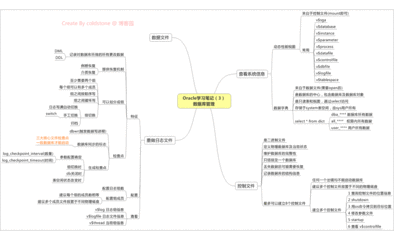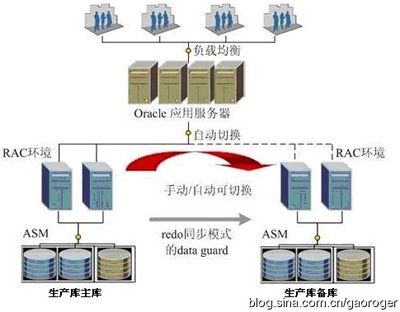常见的数据库
小型数据库 access(微软)
中型数据库 mysql(瑞典MySql AB) sql server(美微软)informix(美IBM)
大型数据库 sybase(美sybase) oracle(美oracle) db2(美IBM)
Oracle基本操作
一、Oracle数据库基本命令:
1.SQL->show user; 显示用户 2.SQL->connscott/tiger;用户连接 3.SQL->disc; 断开连接 4.SQL->passw; 修改密码 5. SQL->exit; 退出 6.SQL->start D:test.sql; 运行D盘下test.sql脚本7.SQL->edit D:test.sql; 编辑D盘下test.sql脚本
8. SQL->spool D:test.sql;
SQL->select * from emp;
SQL->spool off;
二、Oracle管理用户
1.创建用户(以DBA身份)
SQL->create user name identified bypassword(以字母开头)
注意:新建用户默认是没有任何权限的,需要DBA赋予权限(1、系统权限:对数据库的相关权限;2、对象权限:用户对其他用户数据对象(表、视图等)操作的权限)
2. grant赋予用户权限
SQL->grant connect tousername;(把角色connect赋予username(dba 、resource))
SQL->grant select on emp tousername;(emp表的用户scott或sys、system把select权限赋予username)
username 用户可以进行select操作了,SQL->select * fromscott.emp;(查询emp表的内容)
SQL->grant select on emp tousername;(把全部权限赋予)
3.revoke回收用户权限
SQL->revoke select on emp from username;(scott收回用户username对用户scott表emp的select权限(必须是scott赋予username的权限))
4.权限的传递
对象权限:SQL->grant select on emp to username withgrant option;
系统权限:SQL->grant select on emp to username withadmin option;
5.给用户修改密码
SQL->password username;(password scott;sys修改scott密码)
SQL->password;(scott修改自己密码)
6.使用profile管理用户口令
账户锁定
SQL->create profile lockname limitfailed_login_attempts 3 password_lock_time2;(以dba身份)创建配置文件,名字为lockname。
SQL->alter user username profile lockname;
账户解锁: SQL->alter user username accountunlock;
删除profile :SQL->drop profile lockname;
Oracle表的管理
一、表和列的命名规则
· 必须以字母开头
· 不能使用oracle的保留字
· 只能使用A-Z,a-z,0-9,$,#等
· 长度限制为30个字符内
二、oracle的数据类型
1.字符型
char() 定长 特点:查询速度快,效率高 ;浪费空间 最大:char(2000)
varchar2()可变长度 特点:节省空间,效率低 最大varvhar(4000)
clob()字符型大对象 最大4G
2.数字类型
number 可以表示整数和小数
number(5,2)一个小数有5位有效数,2位小数-999.99~999,99
number(5)一个5位整数-99999~99999
3.日期类型
date 包含年月日时分秒
图片类型
blob 二进制数据 可以存放图片、声音
三、表的操作
1.创建表
SQL> create table student (
2 sID number(4),
3 sName varchar2(20),
4 sSex char(2),
5 sBirthday date,
6 sPay number(7,2) 区别于sql server 无逗号。
7 );
Table created
SQL> create table class(
2 cId number(2),
3 cName varchar2(20)
4 );
Table created
2.修改表
添加字段 SQL> alter table student add (cIdnumber(2));
删除某个字段
SQL> alter table student drop column cId;
Table altered
查看表结构 SQL> desc student;
修改字段长度 SQL> alter table student modify (cIdnumber(5);
删除表 SQL> drop table student;
修改表名字 SQL>rename student to stu;
3.添加数据
SQL>insert into studentvalues(1,'小明','男','11-5月-2011',12345.1,12);
1 row inserted
日期格式默认为DD-MON-YY 天-月份-年
可以修改默认日期格式
SQL> alter session set nls_date_format='yyyy-mm-dd';
Session altered
修改一个字段
SQL>update student set sSex='男' wheresId='2';
1 row updated
添加空值
SQL> insert into student (sId,sname,sbirthday)values (4,'小明',NULL);
1 row inserted
查询时注意:SQL> select * from student where sBirthdayis null;
删除数据 SQL>delete fromstudent;删除所有记录,表结构还在,如果再删除之前设置回滚点还可以回滚。
回滚操作
SQL>savepoint a;
SQL>delete from student;
SQL>rollback to a;
· SQL>drop table student;删除表结构和数据
· SQL>delete from student where sId=1;删一条记录
· SQL>truncate tablestudent;删除所有记录,表结构还在,速度快对于大型表适用
oracle 表的基本查询
SQL> set timing on;显示执行时间
SQL> desc dept; 查看表结构
一、单表查询
取消重复行
SQL> select distinct deptno ,job from emp;
NULL处理
SQL>select sal+nvl(comm,0) fromemp;当comm为null时变为0
SQL Server中为select sal+isnull(comm,0) from emp;
where子句
SQL>select ename,hiredate from emp wherehiredate>'1-1月-1989';
like语句
SQL>select ename,sal from emp where ename like'S%';
%:零个或多个字符
_:任意单个字符
逻辑操作符 or and
order by 子句
SQL>select * from emp order by sal;默认为升序
SQL>select * from emp order by sal asc;升序
SQL>select * from emp order by sal desc;降序
使用列的别名排序
SQL>select ename,(sal+nvl(comm,0))*12 as "年薪"from emp order by "年薪" desc;
Oracle复杂查询
max(),min(),avg(),sum(),count()
group by用于对查询结果分组统计
having子句用于限制分组显示结果
SQL>select avg(sal),max(sal),deptno from empgroup by deptno having avg(sal)>2000 order byavg(sal) asc;
二、多表查询
1.笛卡尔积
SQL>select e.ename,e.sal,d.dname from emp e,deptd where e.deptno=d.deptno;
2.自连接
自连接指在同一张表的连接查询
SQL>select worker.ename,boss.ename from empworker,emp boss where worker.mgr=boss.empno;
3.子查询(嵌套查询)
嵌入在其他sql语句中的select语句。
单行子查询
SQL>select * from emp where deptno=(select depnofrom emp where ename='SMITH');
多行子查询

SQL>select * from emp where job in (selectdistinct job from emp where deptno = 10 );
多行子查询中使用all
SQL>select ename,sal,deptno from emp wheresal>all (select sal from emp where deptno=30);
等价
SQL>select ename,sal,deptno from emp wheresal>(select max(sal) from emp where deptno=30);
多行子查询中使用any
SQL>select ename,sal,deptno from emp wheresal>any (select sal from emp where deptno=30);
等价
SQL>select ename,sal,deptno from emp wheresal>(select min(sal) from emp where deptno=30);
多列子查询
SQL>select ename,sal from emp where(deptno,job)=(select deptno,job from emp where ename='SMITH');
SQL>select a2.ename,a2.sal,a2.deptno,a1.mysalfrom emp a2,(select deptno,avg(sal) mysal from emp group by deptno)a1 where a2.deptno=a1.deptno anda2.sal>a1.mysal;
注意表取别名是不加as,列可以。
SQL> select a2.ename,a2.sal,a2.deptno,a1.mysalfrom emp a2 join (select deptno,avg(sal) as mysal from emp group bydeptno) a1 on a2.deptno= a1.deptno wherea2.sal>a1.mysal ;
4.分页查询
SQL> select * from (select a.*,rownum rn from(select * from emp) a where rownum<=10 ) wherern>=6;
SQL> select * from (select a.*,rownum rn from(select ename,sal from emp order by sal) a whererownum<=10 ) where rn>=6;
5.查询结果创建新表
SQL>create table mytable (id,ename,sal) as selectempno,ename,sal from emp;
合并查询
集合操作符union
union all
intersect
minus 差集
6.创建新的数据库
数据库配置助手Database Configuration Assistant
 爱华网
爱华网



